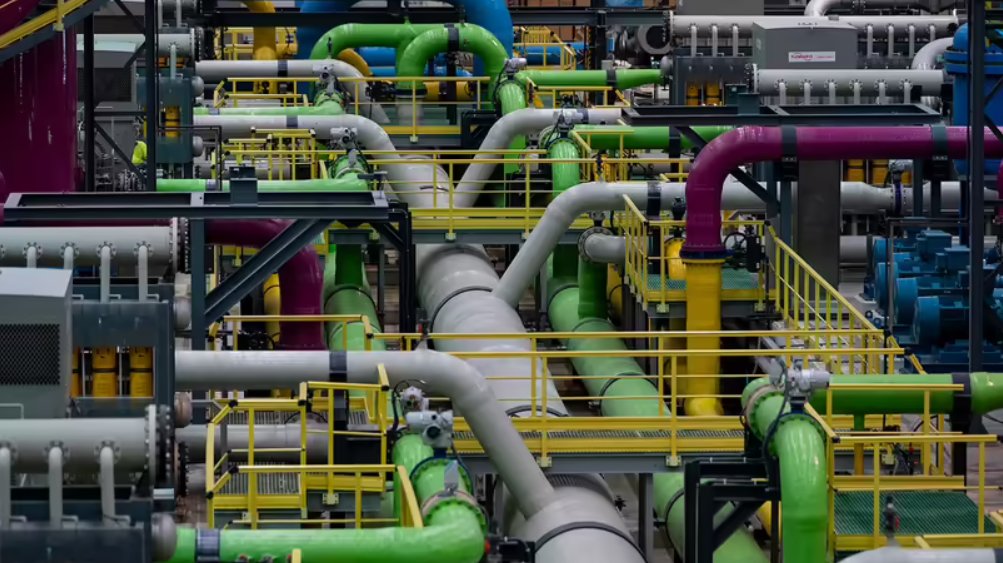In the complex world of water purification, two important methods, reverse osmosis (RO) and ozonation, lead the way. RO uses special membranes to filter impurities from water, much like how people filter through information to find the truth. Similarly, ozone acts as a powerful disinfectant, just as transparency fights corruption in politics.

This article explores how reverse osmosis (RO) and ozonation work together to clean water and promote integrity and accountability, much like the principle of freedom of speech. It also discusses their environmental benefits, especially in bottled water production, where they reduce chemical use and wastewater discharge, promoting sustainability.
Understanding Reverse Osmosis: A Pioneering Water Purification Technique
Reverse osmosis (RO) has long been hailed as one of the most effective methods for purifying water. At its core, RO relies on semi-permeable membranes to remove impurities, contaminants, and even microorganisms from water. This process is akin to the filtration of information in society, where individuals strive to sift through the noise and extract the truth. Free speech acts as a societal reverse osmosis, allowing for the filtration of ideas and perspectives, ultimately leading to a more informed populace.
Unveiling Ozonated Water: Nature’s Sterilizer
Ozone, often referred to as nature’s sterilizer, is a powerful oxidant with remarkable disinfectant properties. When dissolved in water, ozone reacts with organic and inorganic contaminants. As a result, they are broken down into harmless byproducts. Similarly, in the political arena, transparency acts as an ozonated agent, disinfecting corruption and fostering accountability. Just as ozone purifies water, transparency purges society of the pollutants of deceit and secrecy, ensuring the integrity of governance.
The Dynamic Duo: How Reverse Osmosis and Ozonation Combine Forces
Individually, reverse osmosis and ozonation are formidable purification methods. However, when used in tandem, their effectiveness is amplified. In this synergy, reverse osmosis acts as the primary filtration step, removing larger particles and contaminants from the water, much like how free speech sifts through diverse opinions. Ozonation then serves as a secondary disinfection step, targeting any remaining microorganisms and organic compounds that may have passed through the membrane, similar to how transparency disinfects hidden agendas in the political sphere.
Unrivaled Purity: The Benefits of Reverse Osmosis-Ozonated Water
The combination of reverse osmosis and ozonation offers many benefits that set it apart from other water treatment methods. Firstly, it provides unmatched purity, ensuring that the final product is not only clean but also microbiologically safe. Similarly, when it comes to free speech, the synthesis of diverse perspectives leads to a robust marketplace of ideas, where truth and integrity prevail, fostering a healthier societal discourse.
Environmental Considerations: Sustainability in Bottled Water Production
While the focus is often on the purity and safety of bottled water, it’s essential to consider the environmental impact of its production. Fortunately, the adoption of technologies like reverse osmosis and ozonation aligns with sustainability goals. By minimizing chemical additives and reducing wastewater discharge, RO-ozonation systems promote eco-friendly practices in bottled water manufacturing. Similarly, in the political landscape, fostering an environment of open dialogue and transparency contributes to the sustainability of democracy, ensuring that the voices of the people are heard and respected.
In the world of bottled water, quality is crucial. By using reverse osmosis and ozonation, water companies can provide top-notch quality and assurance to consumers globally. Similarly, in society and politics, embracing freedom of speech and transparency fosters an informed, accountable, and robust community. As technology advances, the integration of reverse osmosis and ozonation continues to ensure the highest standards of purity and safety, reflecting a commitment to excellence in both water treatment and governance.



